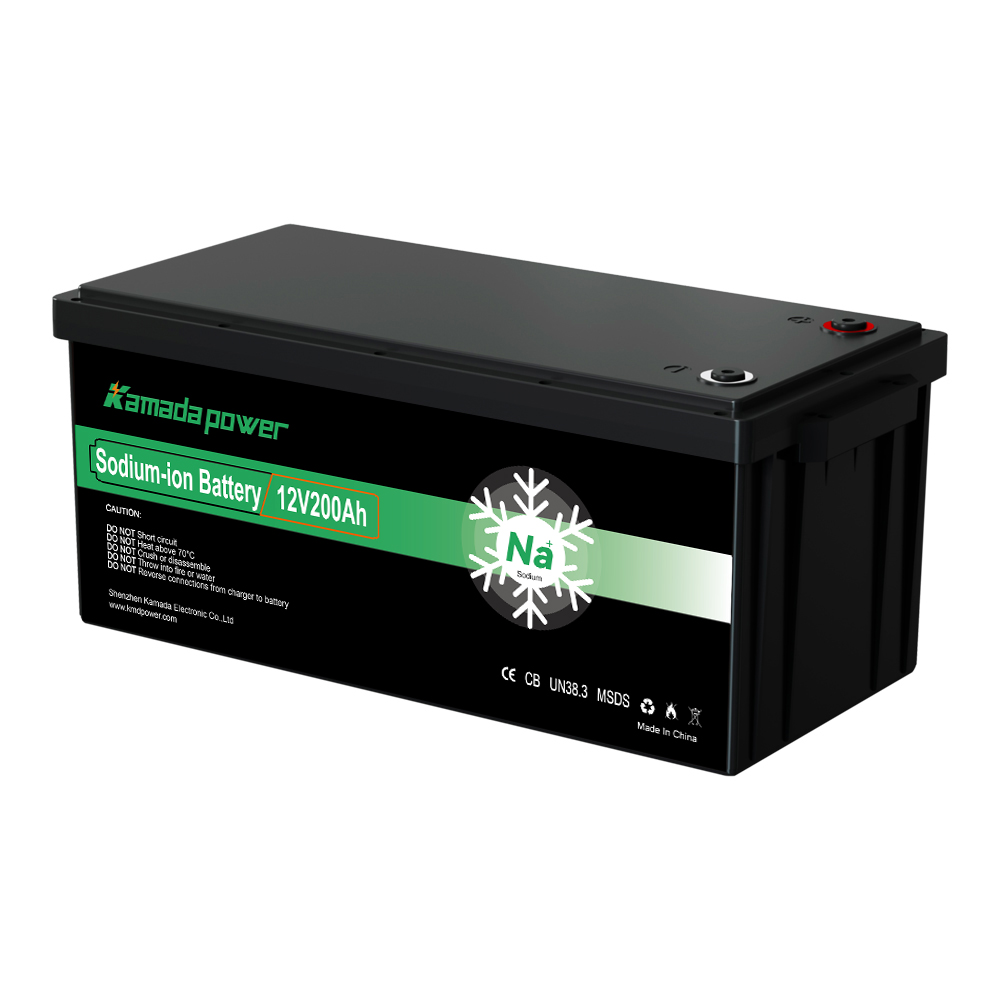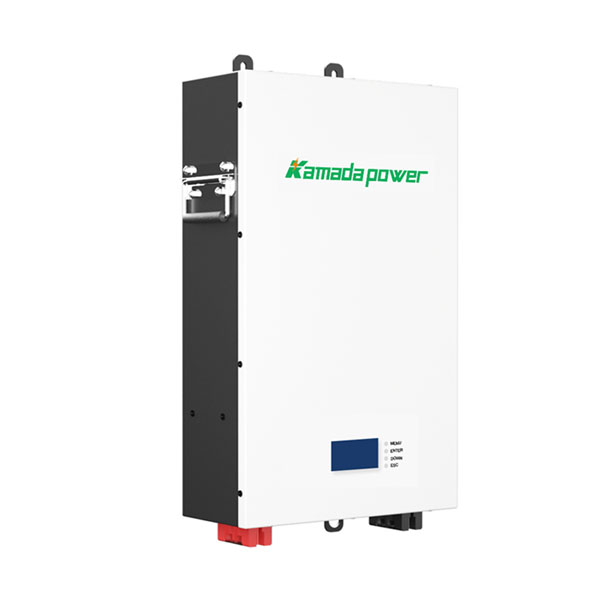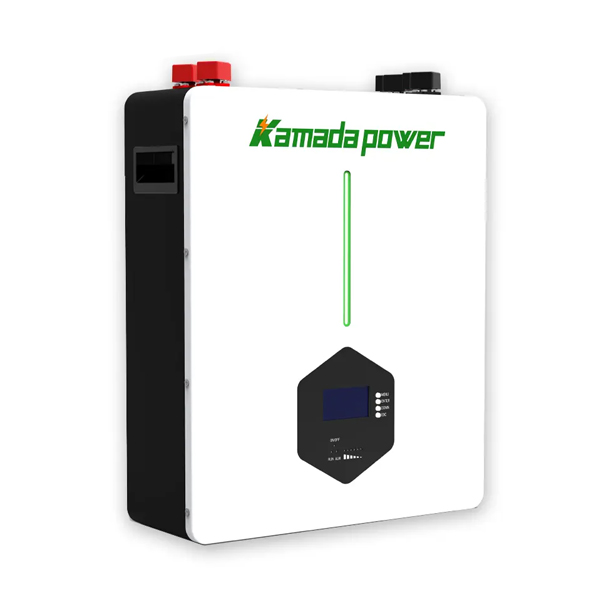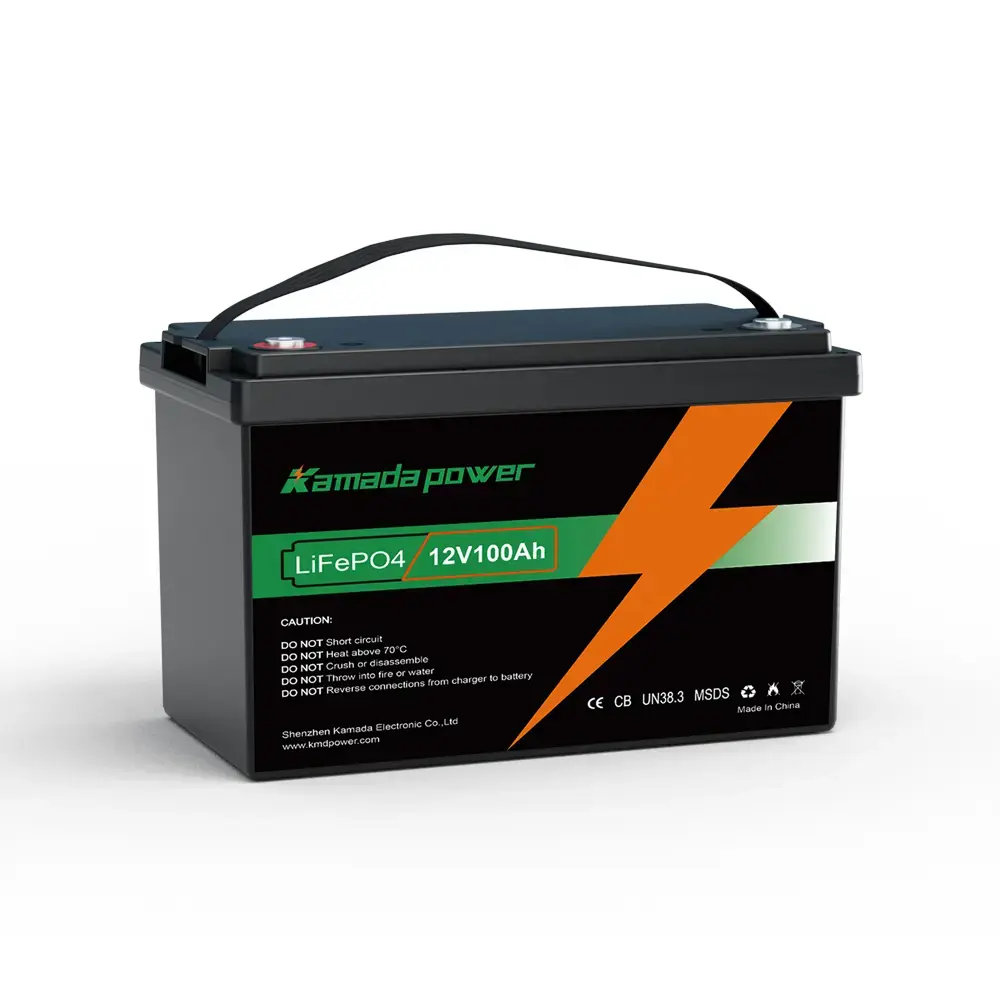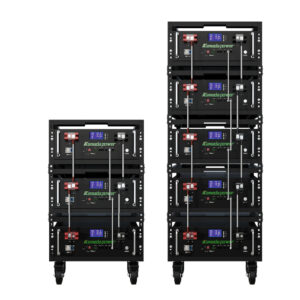Introduction
Understanding the capabilities of a 50Ah lithium battery is crucial for anyone who relies on portable power sources, whether for boating, camping, or everyday devices. This guide covers the various applications of a 50Ah lithium battery, detailing its runtime for different devices, charging times, and maintenance tips. With the right knowledge, you can maximize your battery’s efficiency for a seamless power experience.
1. How Long Will a 50Ah Lithium Battery Run a Trolling Motor?
| Trolling Motor Type | Current Draw (A) | Rated Power (W) | Theoretical Runtime (Hours) | Notes |
|---|---|---|---|---|
| 55 lbs thrust | 30-40 | 360-480 | 1.25-1.67 | Calculated at max draw |
| 30 lbs thrust | 20-25 | 240-300 | 2-2.5 | Suitable for small boats |
| 45 lbs thrust | 25-35 | 300-420 | 1.43-2 | Suitable for medium boats |
| 70 lbs thrust | 40-50 | 480-600 | 1-1.25 | High power demand, suitable for large boats |
| 10 lbs thrust | 10-15 | 120-180 | 3.33-5 | Suitable for small fishing boats |
| 12V Electric Motor | 5-8 | 60-96 | 6.25-10 | Low power, suitable for recreational use |
| 48 lbs thrust | 30-35 | 360-420 | 1.43-1.67 | Suitable for various water bodies |
How Long Will a 50Ah Lithium Battery Run a Trolling Motor? The motor with 55 lbs thrust has a runtime of 1.25 to 1.67 hours at maximum draw, suitable for large boats with high power needs. In contrast, the 30 lbs thrust motor is designed for small boats, providing a runtime of 2 to 2.5 hours. For low power requirements, the 12V electric motor can offer 6.25 to 10 hours of runtime, ideal for recreational use. Overall, users can select the appropriate trolling motor based on boat type and usage needs to ensure optimal performance and runtime.
Notes:
- Current Draw (A): The current demand of the motor under various loads.
- Rated Power (W): The motor’s output power, calculated from voltage and current.
- Theoretical Runtime Formula: Runtime (hours) = Battery Capacity (50Ah) ÷ Current Draw (A).
- Actual runtime may be affected by motor efficiency, environmental conditions, and usage patterns.
2. How Long Does a 50Ah Lithium Battery Last?
| Device Type | Power Draw (Watts) | Current (Amps) | Usage Time (Hours) |
|---|---|---|---|
| 12V Refrigerator | 60 | 5 | 10 |
| 12V LED Light | 10 | 0.83 | 60 |
| 12V Sound System | 40 | 3.33 | 15 |
| GPS Navigator | 5 | 0.42 | 120 |
| Laptop | 50 | 4.17 | 12 |
| Phone Charger | 15 | 1.25 | 40 |
| Radio Equipment | 25 | 2.08 | 24 |
| Trolling Motor | 30 | 2.5 | 20 |
| Electric Fishing Gear | 40 | 3.33 | 15 |
| Small Heater | 100 | 8.33 | 6 |
A 12V refrigerator with a power draw of 60 watts can operate for about 10 hours, while a 12V LED light, drawing only 10 watts, can last up to 60 hours. The GPS navigator, with a mere 5-watt draw, can work for 120 hours, making it ideal for long-duration use. Conversely, a small heater with a power draw of 100 watts will only last 6 hours. Therefore, users should consider power draw and runtime when selecting devices to ensure their actual usage needs are met.
Notes:
- Power Draw: Based on common device power data from the U.S. market; specific devices may vary by brand and model.
- Current: Calculated from the formula (Current = Power Draw ÷ Voltage), assuming a voltage of 12V.
- Usage Time: Derived from the capacity of the 50Ah lithium battery (Usage Time = Battery Capacity ÷ Current), measured in hours.
Considerations:
- Actual Usage Time: May vary due to device efficiency, environmental conditions, and battery status.
- Device Diversity: Actual equipment on board may be more varied; users should adjust usage plans based on their needs.
3. How Long Does It Take to Charge a 50Ah Lithium Battery?
| Charger Output (A) | Charging Time (Hours) | Device Example | Notes |
|---|---|---|---|
| 10A | 5 hours | Portable refrigerator, LED light | Standard charger, suitable for general use |
| 20A | 2.5 hours | Electric fishing gear, sound system | Fast charger, suitable for emergencies |
| 5A | 10 hours | Phone charger, GPS navigator | Slow charger, suitable for overnight charging |
| 15A | 3.33 hours | Laptop, drone | Medium-speed charger, suitable for daily use |
| 30A | 1.67 hours | Trolling motor, small heater | High-speed charger, suitable for quick charging needs |
The output power of the charger directly affects the charging time and applicable devices. For instance, a 10A charger takes 5 hours, suitable for devices like portable refrigerators and LED lights for general use. For quick charging needs, a 20A charger can fully charge electric fishing gear and sound systems in just 2.5 hours. A slow charger (5A) is best for overnight charging devices like phone chargers and GPS navigators, taking 10 hours. A medium-speed 15A charger suits laptops and drones, taking 3.33 hours. Meanwhile, a 30A high-speed charger completes charging in 1.67 hours, making it ideal for devices like trolling motors and small heaters that require quick turnaround. Selecting the appropriate charger can improve charging efficiency and meet different device usage needs.
Calculation Method:
- Charging Time Calculation: Battery capacity (50Ah) ÷ Charger output (A).
- For example, with a 10A charger: Charging Time = 50Ah ÷ 10A = 5 hours.
4. How Strong Is a 50Ah Battery?
| Strong Dimension | Description | Influencing Factors | Pros and Cons |
|---|---|---|---|
| Capacity | 50Ah indicates the total energy the battery can provide, suitable for medium to small devices | Battery chemistry, design | Pros: Versatile for various applications; Cons: Not suitable for high power demands |
| Voltage | Typically 12V, applicable for multiple devices | Battery type (e.g., lithium-ion, lithium iron phosphate) | Pros: Strong compatibility; Cons: Limits high voltage applications |
| Charging Speed | Can use various chargers for fast or standard charging | Charger output, charging technology | Pros: Fast charging reduces downtime; Cons: High power charging may affect battery lifespan |
| Weight | Generally lightweight, easy to carry | Material choice, design | Pros: Easy to move and install; Cons: May affect durability |
| Cycle Life | About 4000 cycles, depending on usage conditions | Depth of discharge, temperature | Pros: Long lifespan; Cons: High temperatures may reduce lifespan |
| Discharge Rate | Generally supports discharge rates up to 1C | Battery design, materials | Pros: Meets short-term high power needs; Cons: Continuous high discharge may cause overheating |
| Temperature Tolerance | Operates in environments from -20°C to 60°C | Material choice, design | Pros: Strong adaptability; Cons: Performance may decline in extreme conditions |
| Safety | Features overcharge, short circuit, and over-discharge protection | Internal circuit design, safety mechanisms | Pros: Enhances user safety; Cons: Complex designs may increase costs |
5. What Is the Capacity of a 50Ah Lithium Battery?
| Capacity Dimension | Description | Influencing Factors | Application Examples |
|---|---|---|---|
| Rated Capacity | 50Ah indicates the total energy the battery can provide | Battery design, material type | Suitable for small devices like lights, refrigeration equipment |
| Energy Density | The amount of energy stored per kilogram of battery, typically 150-250Wh/kg | Material chemistry, manufacturing process | Provides lightweight energy solutions |
| Depth of Discharge | Generally recommended not to exceed 80% to extend battery life | Usage patterns, charging habits | Depth of discharge may lead to capacity loss |
| Discharge Current | Maximum discharge current typically at 1C (50A) | Battery design, temperature | Suitable for high power devices for short periods, like power tools |
| Cycle Life | About 4000 cycles, depending on usage and charging methods | Charging frequency, depth of discharge | More frequent charging and deep discharges shorten lifespan |
The rated capacity of a 50Ah lithium battery is 50Ah, meaning it can provide 50 amps of current for one hour, suitable for high power devices like power tools and small appliances. Its energy density is usually between 150-250Wh/kg, ensuring portability for handheld devices. Keeping the depth of discharge below 80% can extend battery life, with a cycle life of up to 4000 cycles indicating durability. With a self-discharge rate below 5%, it’s ideal for long-term storage and backup. The applicable voltage is 12V, widely compatible with RVs, boats, and solar systems, making it perfect for outdoor activities like camping and fishing, providing stable and reliable power.
6. Will a 200W Solar Panel Run a 12V Fridge?
| Factor | Description | Influencing Factors | Conclusion |
|---|---|---|---|
| Panel Power | A 200W solar panel can output 200 watts under optimal conditions | Light intensity, panel orientation, weather conditions | Under good sunlight, a 200W panel can power a refrigerator |
| Refrigerator Power Draw | The power draw of a 12V refrigerator typically ranges from 60W to 100W | Refrigerator model, usage frequency, temperature setting | Assuming a power draw of 80W, the panel can support its operation |
| Sunlight Hours | Daily effective sunlight hours usually range from 4-6 hours | Geographic location, seasonal changes | In 6 hours of sunlight, a 200W panel can generate approximately 1200Wh of power |
| Energy Calculation | Daily power provided compared to the refrigerator’s daily requirements | Power consumption and runtime of the refrigerator | For an 80W refrigerator, 1920Wh is needed for 24 hours |
| Battery Storage | Requires an appropriately sized battery to store excess power | Battery capacity, charge controller | At least a 200Ah lithium battery is recommended to match daily needs |
| Charge Controller | Must use to prevent overcharging and over-discharging | Type of controller | Using an MPPT controller can improve charging efficiency |
| Usage Scenarios | Suitable for outdoor activities, RVs, emergency power, etc. | Camping, hiking, daily use | A 200W solar panel can meet the power needs of a small refrigerator |
A 200W solar panel can output 200 watts under optimal conditions, making it suitable for powering a 12V refrigerator with a power draw between 60W and 100W. Assuming the refrigerator draws 80W and receives 4 to 6 hours of effective sunlight daily, the panel can generate about 1200Wh. To meet the refrigerator’s daily requirement of 1920Wh, it is advisable to use a battery with at least 200Ah capacity to store excess energy and pair it with an MPPT charge controller for improved efficiency. This system is ideal for outdoor activities, RV use, and emergency power needs.
Note: A 200W solar panel can power a 12V refrigerator under optimal conditions, but considerations for sunlight duration and power draw of the refrigerator must be taken into account. With sufficient sunlight and matching battery capacity, effective support for the refrigerator’s operation is achievable.
7. How Many Amps Does a 50Ah Lithium Battery Output?
| Usage Time | Output Current (Amps) | Theoretical Runtime (Hours) |
|---|---|---|
| 1 hour | 50A | 1 |
| 2 hours | 25A | 2 |
| 5 hours | 10A | 5 |
| 10 hours | 5A | 10 |
| 20 hours | 2.5A | 20 |
| 50 hours | 1A | 50 |
The output current of a 50Ah lithium battery is inversely proportional to usage time. If it outputs 50 amps in one hour, the theoretical runtime is one hour. At 25 amps, the runtime extends to two hours; at 10 amps, it lasts five hours; at 5 amps, it continues for ten hours, and so forth. The battery can sustain 20 hours at 2.5 amps and up to 50 hours at 1 amp. This feature makes the 50Ah lithium battery flexible in adjusting current output based on demand, meeting various device usage requirements.
Note: Actual usage may vary based on discharge efficiency and device power consumption.
8. How to Maintain a 50Ah Lithium Battery
Optimize Charge Cycles
Keep your battery’s charge between 20% and 80% for optimal lifespan.
Monitor Temperature
Maintain a temperature range of 20°C to 25°C to preserve performance.
Manage Depth of Discharge
Avoid discharges over 80% to protect chemical structure.
Choose the Right Charging Method
Opt for slow charging when possible to enhance battery health.
Store Properly
Store in a dry, cool location with a charge level of 40% to 60%.
Utilize a Battery Management System (BMS)
A robust BMS ensures safe operation and longevity.
Regular Maintenance Checks
Periodically check voltage to ensure it stays above 12V.
Avoid Extreme Usage
Limit maximum discharge current to 50A (1C) for safety.
Conclusion
Navigating the specifics of a 50Ah lithium battery can greatly enhance your adventures and daily activities. By knowing how long it can power your devices, how quickly it can be recharged, and how to maintain it, you can make informed choices that fit your lifestyle. Embrace the reliability of lithium technology to ensure you’re always ready for any situation.


